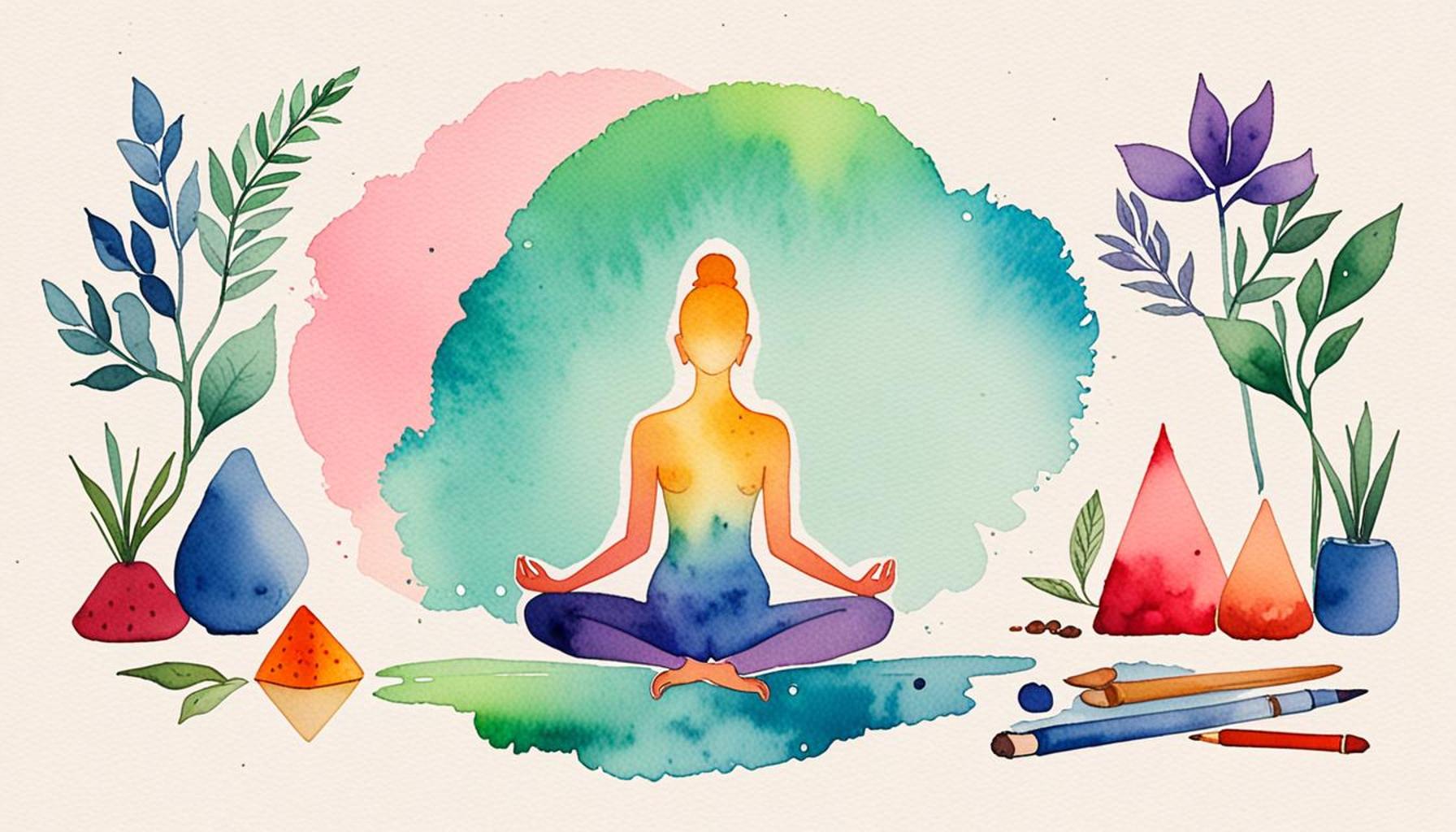Mindfulness and Minimalism Practices: How Mindfulness Enhances an Intentional Life

Understanding the Impact of Mindfulness and Minimalism
In an era characterized by rapid technological advancements and an overwhelming pace of life, achieving mental clarity often feels like a distant dream. Many individuals grapple with feelings of being embroiled in chaos, which can lead to heightened levels of stress and dissatisfaction. Fortunately, integrating the principles of mindfulness and minimalism into daily life can offer profound and transformative benefits that pave the way for a more intentional and rewarding existence.
Mindfulness, at its core, is the practice of being fully present in the moment. This technique has roots in ancient traditions but has gained significant traction in contemporary society due to its demonstrated benefits in mental health. Some critical advantages of adopting mindfulness include:
- Be present in the moment: Engaging fully with your current experience can enhance appreciation for everyday situations, fostering gratitude and joy.
- Reduce anxiety and increase focus: By training the mind to stay focused on the present, individuals can significantly decrease feelings of worry about the future or regret about the past, which often contribute to anxiety.
- Enhance emotional regulation: Mindfulness equips individuals with the tools to understand and manage their emotions better, leading to improved interpersonal relationships and better decision-making.
On the flip side, minimalism encourages individuals to simplify their lives by stripping away excess, allowing them to concentrate on what truly matters. Key aspects of embracing minimalism include:
- Decluttering your physical space: A tidy environment has been shown to promote mental clarity, allowing for more focus and creativity.
- Focusing on what truly matters: By prioritizing experiences and relationships over material possessions, individuals can cultivate deeper satisfaction and fulfillment in their lives.
- Reducing distractions to find peace: Minimalism encourages individuals to eliminate distractions, whether they be physical goods or digital noise, enabling a more streamlined and peaceful lifestyle.
The synergy of mindfulness and minimalism creates a powerful framework for living intentionally. Through mindfulness, individuals develop a heightened awareness of their choices, empowering them to align actions with personal values. This alignment leads to a more cohesive and enriched life, where the clutter of unnecessary distractions is minimized, and mental peace can be pursued.
This exploration into the intersection of these two philosophies invites readers to delve deeper into how they can incorporate these practices into their everyday routines. By adopting mindfulness techniques, such as meditation or conscious breathing, alongside the principles of minimalism, like decluttering spaces or reassessing priorities, individuals can uncover a pathway toward greater peace and satisfaction. In the midst of modern life’s overwhelming demands, the transformative impact of adopting these approaches can lead to a fuller, more meaningful existence.

DIVE DEEPER: Click here to discover the psychological benefits of conscious consumption
The Intersection of Mindfulness and Minimalism
As individuals navigate their busy lives, the integration of mindfulness and minimalism emerges as a powerful antidote to the complexities of modern existence. By combining these two practices, one can cultivate a lifestyle that prioritizes intention and clarity. This harmonious relationship between mindfulness and minimalism is not merely theoretical; it is a practical approach that can be implemented in daily routines to enhance quality of life.
The essence of mindfulness lies in its focus on the present moment. In a fast-paced society where distractions abound, this mental state allows individuals to step back and fully engage with the now. Mindfulness practices, such as meditation, yoga, or even mindful walking, enable people to listen to their thoughts and feelings without judgment. This heightened state of awareness can transform mundane activities into opportunities for reflection and contentment. For example, consider engaging in mindful eating—taking the time to savor each bite can enhance the overall dining experience and foster gratitude for nourishment.
On the other side, minimalism promotes the act of paring down possessions and commitments to what genuinely adds value to life. It encourages individuals to embrace simplicity, often leading to a clearer mental state. By shedding the burden of excess, whether it be material goods or overwhelming schedules, one can open themselves to experiences that truly resonate. Here are some key benefits of minimalism:
- Enhanced focus: A clutter-free environment aligns with a peaceful mind, allowing for better concentration on tasks at hand.
- Increased mindfulness: By eliminating distractions, individuals can better focus on personal values and aspirations.
- A greater sense of control: Minimalism fosters an ability to make conscious choices, reducing anxiety and promoting mental well-being.
When mindfulness is infused into a minimalist lifestyle, a clear synergy is established. Mindfulness practices encourage individuals to evaluate what is essential, driving them to adopt a minimalist approach that supports their well-being. For instance, during a decluttering session, applying mindfulness techniques can transform an ordinary task into a moment of introspection. This method helps individuals assess their connection to objects and decide which items genuinely serve a purpose in their lives.
The practical implementation of both mindfulness and minimalism serves to reinforce personal values and goals. By embracing these practices, people can create a lifestyle that not only reflects their intentions but also allows for a deeper connection to their surroundings. Living intentionally is not merely a guideline; it is a transformative journey that requires continuous reflection and adjustments. As individuals uncover the transformative power of intertwining mindfulness with minimalism, they unlock the potential for a peaceful, fulfilling, and intentional life.
| Category | Description |
|---|---|
| Mindful Living | Incorporating practices that promote awareness and presence in daily life. |
| Intentional Choices | Making deliberate decisions that align with personal values and goals. |
| Decluttering | Reducing physical and mental clutter to enhance focus and clarity. |
| Stronger Connections | Building meaningful relationships by being fully present with others. |
Mindfulness and minimalism synergistically foster a deeper connection with life, emphasizing the importance of living intentionally. The practice of mindful living serves as a foundation, helping individuals concentrate on their current experiences instead of being distracted by past regrets or future uncertainties. When combined with intentional choices, individuals are empowered to align their actions with their core values and purposes, leading to a sense of fulfillment.Moreover, decluttering both the physical space and the mind can yield extraordinary benefits. It allows practitioners to experience greater mental clarity and ease. By simplifying their surroundings, they uncover the profound impact that less can truly be. This leads to stronger connections with friends and family, as mindfulness enables individuals to engage meaningfully in their interactions. They become active listeners and participants in conversations, leading to enriched relationships and a supportive community. Exploring these aspects further can unlock pathways towards a more intentional life.
DISCOVER MORE: Click here to learn about innovative storage solutions
Practicing Mindfulness in a Minimalist Framework
Incorporating mindfulness into daily routines often complements the principles of minimalism, creating a framework that encourages intentional living. One effective approach to foster this unity involves the practice of mindfulness while engaging in activities that resonate with a minimalist mindset. This dual focus can transform ordinary tasks into sacred rituals filled with purpose and meaning.
For example, consider the act of cleaning one’s living space. When approached mindfully, this task evolves from a mundane chore into a form of meditation. Instead of hurrying through the motions, individuals can express gratitude for their belongings as they dust shelves or organize closets. This reflection helps in letting go of items that no longer serve a meaningful function while cultivating a deeper appreciation for those that do. Research indicates that mindfulness can significantly reduce stress, and integrating it into household management allows individuals to create a sanctuary that nurtures well-being and aligns with their intentional lifestyle.
The connection between mindfulness and minimalism extends to one’s digital life as well. In today’s world, technology can be both a source of connection and a distraction. Mindful consumption of digital content can reshape how we interact with technology. For instance, individuals can initiate “tech-free time” periods where they disconnect from devices, allowing for genuine interactions with self and surroundings. This practice not only minimizes digital clutter but also enhances emotional and mental clarity.
Engaging in hobbies with mindfulness can also serve as a bridge between these two practices. Whether one enjoys painting, writing, or gardening, devoting time to these activities with a clear and present mindset allows for deeper enjoyment and self-expression. This intentional focus encourages individuals to appreciate the moment and disconnect from external anxieties, embodying the core principles of both mindfulness and minimalism—simplicity and presence in action.
The Role of Mindfulness in Intentional Decision-Making
As individuals strive to live an intentional life, mindfulness plays a critical role in decision-making processes. Every choice, from daily routines to long-term goals, can be enhanced through mindful consideration. By pausing to reflect before making decisions, individuals can align their choices with their core values and aspirations, leading to a more fulfilling existence. For example, when contemplating a new purchase, mindfulness allows one to question the necessity and long-term value of the item rather than succumbing to impulse buy tendencies.
Moreover, the practice of journaling can serve as a powerful tool for integrating mindfulness and minimalism into intentional living. Maintaining a gratitude journal or doing a daily reflections exercise gives individuals the chance to document their thoughts, feelings, and experiences in a structured yet minimalistic way. Over time, this practice fosters a deeper understanding of one’s personal values, guiding future decisions and promoting a more serene environment.
In the context of modern American life, where consumerism often overshadows fulfillment, the intentional adoption of mindfulness alongside minimalism provides a pathway for individuals to rediscover joy in simplicity. Communities and social groups that encourage these practices create a support system, amplifying the collective journey towards mindfulness and minimalism. For instance, many urban areas now offer workshops exploring mindfulness techniques or minimalist living strategies. These platforms not only foster education but also build community connections, which are essential for personal growth in a fast-paced world.
EXPLORE MORE: Click here to learn how minimalism can enhance your life
Conclusion: Embracing an Intentional Life through Mindfulness and Minimalism
In a world filled with distractions and overwhelming choices, the integration of mindfulness and minimalism establishes a compelling framework for leading an intentional life. Both practices invite individuals to slow down, reflect, and prioritize what truly matters, encouraging a deeper connection to oneself and the surrounding environment. By focusing on simplicity and presence, individuals can cultivate a more profound appreciation for their daily experiences, transforming mundane activities into enriching rituals.
Moreover, the practice of mindful decision-making empowers individuals to align their choices with their core values, thereby reducing clutter—both physical and mental. As people learn to streamline their possessions and digital lives through mindfulness, they open themselves to a clearer understanding of their desires and needs. This mindful approach not only promotes well-being but also fosters community engagement, as shared experiences and resources become tools for personal growth and collective support.
Ultimately, the journey towards mindfulness and minimalism encourages individuals to reclaim their time, energy, and purpose, resulting in a life that resonates with intent and clarity. As more people explore these practices—whether through workshops, social groups, or personal explorations—they will likely discover a path leading to a rich, authentic existence. The liberation found in mindfulness and minimalism can genuinely enhance life’s meaning, guiding individuals to savor the beauty of simplicity in an increasingly complex world. Embrace this harmonious blend, and watch as your intentional living unfolds with grace and purpose.


